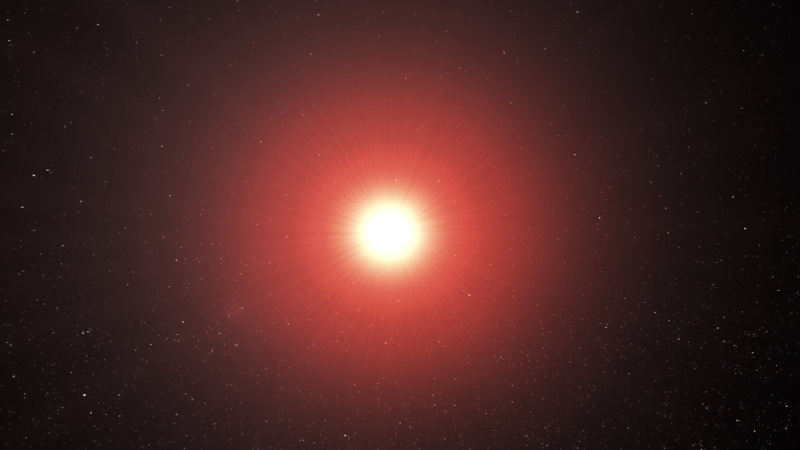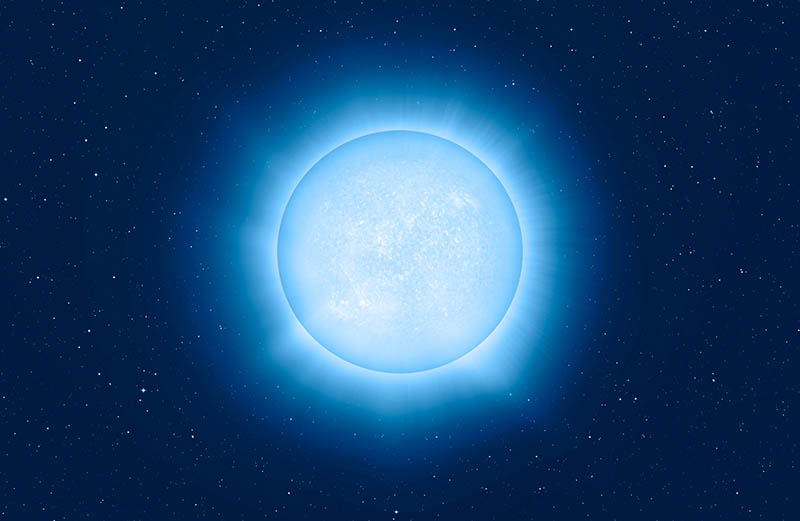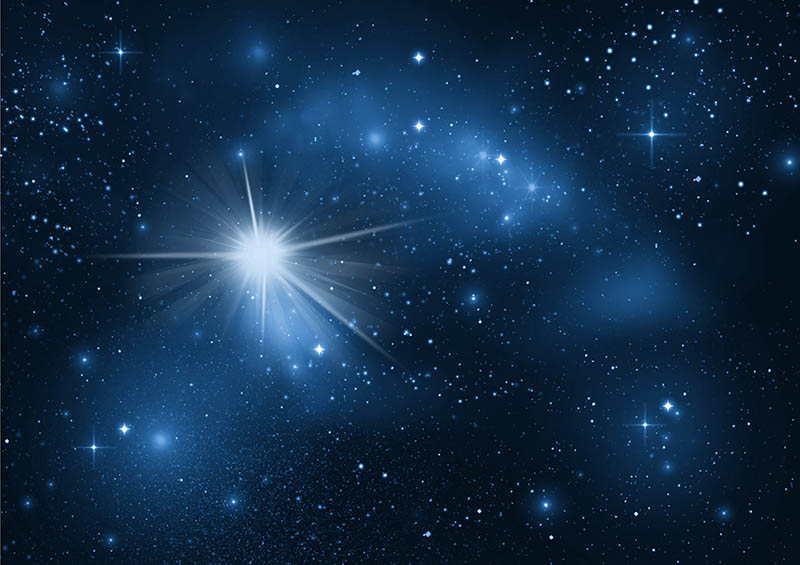How Are Stars Formed? Formation, Cycles & Lifespan
Last Updated on

According to NASA,1 stars are born within dense clouds of dust and scattered throughout galaxies. The accumulation of gas and dust collapses because of gravity, forming stars. These dense clouds are known as “stellar nurseries” or “star-forming regions.”
Star formation is more complex than that, taking millions of years from start to finish. Though we can’t observe the entire process, the lifecycle of the star is integral to astronomy.

Star Formation
Stars form in nebulae,2 or huge clouds of gas and dust. A familiar nebula is the Orion Nebula. Turbulence in the nebula creates sufficient mass, and the gas and dust collapse under their own gravity, creating a buildup of heat in the center. This hot core is the start of the star or a protostar.
Not all of the material in the cloud becomes a star. Some material spreads out and can become planets, asteroids, or comets. Or it could simply remain as dust in the universe.
Computer models of star formation show that the nebulae may divide into multiple sections, which is why stars tend to form in clusters instead of individually.

Star Lifespan and Death
In general, the larger a star is, the shorter its lifespan. Most stars live for billions of years, however.
Once a star uses all the hydrogen at its core, nuclear reactions stop. Without the energy production necessary to support it, the core collapses onto itself and heats up. Hydrogen is still present around the star, so the hydrogen fusion process continues in the surroundings. The hot core pushes the outer layers of the star further outward, leading to an expanding and cooling process that transforms it into a red giant.
Massive stars have comparably massive cores. When they collapse, they could create enough heat to produce nuclear reactions that consume helium and produce heavier elements. This process is temporary and the star’s core will become unstable, either burning stronger or fading. The star then pushes its outer layers and surrounds itself in gas and dust.
- White Dwarfs: Average stars, such as our Sun, become White Dwarfs. The outer layers are ejected until the hot stellar cinder remains, which is known as a White Dwarf. These cores are roughly the size of the Earth. The pressure of electron movements keeps these stars from collapsing, and the larger the core, the denser the White Dwarf. Eventually, these cool down and fade away.
- Novae: White Dwarfs that form in a binary or multiple-star system may have a more eventful end as a Nova. Once believed to be new stars, Novae are ancient stars. If a White Dwarf is close enough to a companion star, its gravity may drag matter from the outer layers into itself, building up a surface layer. When enough hydrogen has accumulated, the White Dwarf brightens because of nuclear fusion and expels the excess material. The glow subsides over a few days, and the cycle begins again. A massive white dwarf may accumulate so much mass that it collapses and explodes, turning into a supernova.
- Supernovae: Main sequence stars are destined to die in an explosion called a supernova. This isn’t just a larger nova, which only has an explosion of the star’s surface. Supernovae have a core that collapses and then explodes, leading to a complex series of nuclear reactions that produce iron at the core. At this point, all the energy possible is extracted from nuclear fusion, the star can’t support its own mass, and its core collapses. The temperature spikes and the outer layers begin to collapse but then rebound with the release of energy and are expelled outward. The supernova will shine for weeks. Generally, a supernova explosion happens every century or so.
- Neutron stars: The core at the center of a supernova has multiple solar masses. The collapse continues until the electrons and protons form neutrons, producing a neutron star. So much mass is held within a small volume; the gravity is incredible! A neutron star that forms in a multiple star system can accumulate gas by stripping it from nearby stars. These stars also have powerful magnetic fields that can accelerate atomic particles.
- Black holes: If a collapsed stellar core is bigger than three solar masses, it collapses completely and forms a black hole. Black holes have infinite density with strong gravity that pulls everything nearby inward, including light. Because astronomy instruments work using photos, or particles of light, black holes can only be detected indirectly—much like “seeing” wind because leaves are blowing. As matter spirals into a black hole, it forms a disk that’s heated to incredible temperatures, emitting Gamma rays and X-rays.


The Cycle Begins Anew
The dust and debris left behind by novae and supernovae blend with the surrounding interstellar gas and dust, adding elements produced during stellar death. The materials are recycled, leading to the formation of new stars and planetary systems.

Final Thoughts
Despite all we know about star nurseries, star birth, and their eventual death, there are many unanswered questions. We do know that stars form in nebulae, and they shine for thousands—or even millions of years—but they do die eventually. When that happens, their remains enrich the area and lay the groundwork for a new generation of stars.
Featured Image Credit: Whitelion61, Shutterstock
About the Author Robert Sparks
Robert’s obsession with all things optical started early in life, when his optician father would bring home prototypes for Robert to play with. Nowadays, Robert is dedicated to helping others find the right optics for their needs. His hobbies include astronomy, astrophysics, and model building. Originally from Newark, NJ, he resides in Santa Fe, New Mexico, where the nighttime skies are filled with glittering stars.
Related Articles:
Binocular Magnification Chart: Numbers & Distances Compared
Can You Use Binoculars to Look At Stars? How to Choose the Right Pair
15 Crucial Facts About Ultraviolet Rays & the Sun
What Constellation Is Spica In? The Interesting Answer!
10 Interesting Leo Constellation Facts, Myths, and FAQs
15 Interesting Pegasus Constellation Facts, Myths, and FAQs
6 Interesting Sagittarius Constellation Facts, Myths, and FAQs in 2024!
What Are Constellations? Where Did They Come From?
